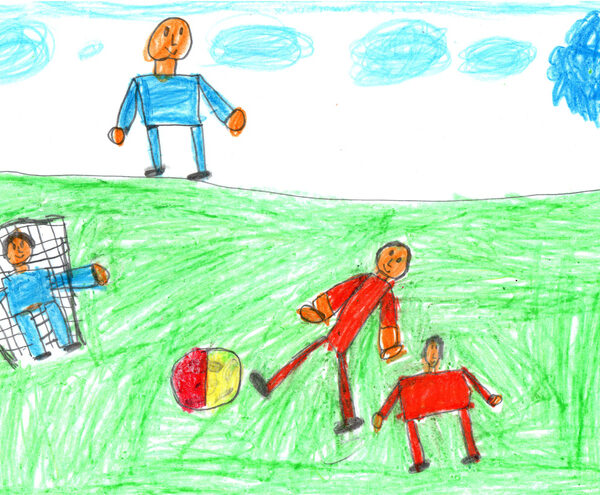Stanford study reveals new insights into children’s development through drawing

Children’s ability to draw recognisable objects and to recognise each other’s drawings improves concurrently throughout childhood, according to a new study from Stanford University.
To reach their findings the researchers worked with staff members from the Children’s Discovery Museum of San Jose to install a kiosk within the museum, then using machine learning algorithms to analyse changes in a large sample of drawings of children from the ages of two years to ten years, finding that children’s ability to draw, and to recognise the illustrations of others develops in parallel in childhood.
Using machine learning enabled the researchers to interpret the large sample size of drawings in this study and highlighted subtleties that helped them understand how children perceive the world, and how they communicate those perceptions through drawing.
The kiosk displayed recorded video prompts of the study’s first author, Stanford psychology postdoctoral fellow Bria Long, asking children to draw certain animals or objects. After receiving the prompt, children using the kiosk would then have 30 seconds to draw the object using their fingertip on a digital tablet. Children using the kiosk were also asked to identify the objects drawn by other children in a guessing game, and to trace objects shown on the screen to assess their motor skills.
Researchers Bria Long, Judith Fan, Holly Huey, Zixian Chai, and Michael Frank also found that not all the improvement in drawing recognisability throughout childhood could be attributed to improvement in drawing skill or inclusion of stereotypical attributes, such as tall ears on a rabbit.
“The kinds of features that lead drawings from older children to be recognisable don’t seem to be driven by just a single feature that all the older kids learn to include in their drawings,” Associate Professor Fan said. “It’s something much more complex that these machine learning systems are picking up on.”

After collecting around 37,000 individual drawings from the kiosk, the researchers used machine learning algorithms to analyze each drawing’s recognizability. Then, the researchers collected data on the distinct object parts of each image in around 2,000 of the drawings, annotated by adult participants who were asked to describe what part of the object the children had drawn with each pen stroke (e.g., “head” or “tail”).
“Scientists have been interested in children’s drawings for quite a long time,” Ms Long said, referencing past studies on how children draw recognisable objects. “But this is the first time that we have been able to combine digital drawings with innovations in machine learning to analyze drawings at scale over development.”
The researchers hope that future work in this area will include similar studies across different cultural groups, in both children and adults.
“Children’s drawings contain a lot of rich information about what they know. And we think this is a really cool way to learn about what children are thinking,” Ms Long said. “Just because your child isn’t drawing something really well doesn’t mean that they’re not expressing interesting knowledge about that category.”
To read the paper in full please see here.
Popular

Practice
Provider
Quality
Research
Workforce
New activity booklet supports everyday conversations to keep children safe
2025-07-10 09:00:16
by Fiona Alston

Quality
Practice
Provider
Research
Workforce
Honouring the quiet magic of early childhood
2025-07-11 09:15:00
by Fiona Alston

Quality
Practice
Provider
Workforce
Reclaiming Joy: Why connection, curiosity and care still matter in early childhood education
2025-07-09 10:00:07
by Fiona Alston












